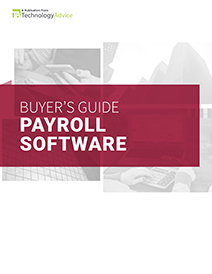Payroll can take a lot of a business owner’s time. In fact, 26 percent of small business owners who do payroll in-house spend three to five hours per month on payroll, and 40 percent of business owners spend 80 or more hours per year on taxes, payroll, and working with accountants.
ALSO READ: 7 of the Best Payroll Management Tools for Your Business
Processing payroll doesn’t have to be a long, time-consuming task. There are ways you can reduce the time it takes to run payroll while still meeting all of your legal obligations.
Stop wasting valuable time and banish these five payroll time wasters:
1. Entering Timecard Data Twice
If employees fill out time sheets that you then have to enter manually into your payroll program, you are wasting time — essentially entering timecard information twice.
You can completely cut out this portion of timecard entry if you use benefits, time, and attendance software that is linked to your payroll. Each employee will have a self-service portal where they can enter timecard information and view their personal payroll data.
Once an employee fills out their timecard in the portal, their data will automatically transfer to your payroll software. Then, you just have to review and approve each employee’s hours. This could drastically reduce the time you spend on time and attendance management.
ALSO READ: 5 Costly Payroll Mistakes Small- and Medium-Sized Businesses Should Avoid
2. Searching for Payroll Documents
There are all sorts of documents you need to run payroll: withholding allowance worksheets, benefits documents, payroll history, etc. You probably keep those documents wherever there is space — some in a filing cabinet, others in a closet, and some on your desk. If your documents are stored in multiple locations, you’re wasting time with payroll whenever you have to hunt down one.
Solve this problem by going paperless. Use a secure record-keeping solution to file all of your employee payroll documents electronically. You can easily organize documents by type or by employee, and when you need to find a document, you can look in the digital folder or enter a search query.
3. Distributing Paychecks
It can take a lot of time to create and distribute employee paychecks each pay period. The process starts out with you handwriting or printing checks and paystubs. Then you have to distribute the paychecks or mailing them to employees. Even if you have a small team, these tasks can add up.
Save time by setting up direct deposit. Once you complete payroll, tell your bank or another direct deposit provider how much money to send directly to each employee’s bank account.
If you use payroll software that includes direct deposit services, paying employees could take no extra time at all. Because the payroll program knows exactly how much each employee should make, the software can send direct deposits without requiring you to enter any extra information.
Just make sure you follow federal and state direct deposit laws, as they might prevent you from making direct deposit mandatory.
4. Not Asking for Help
Payroll is complicated. There are dozens of laws, rules, and rates to remember, and they frequently change. Sometimes, unusual payroll situations arise that inexperienced businesses don’t know how to handle.
Sure, you can figure out how to adjust or solve your payroll problems, but you might waste days or weeks figuring out a solution. You’ll probably have to do research, learn how to do payroll on your own, and then implement a solution. Simply asking someone for help can save you a lot of hassle.
If you have a relationship with an accountant or another payroll professional, they might be able to answer some of your questions.
If you already use payroll software, you can often call customer support and ask for help. This is a great option, especially if the customer support is free. Not only can the representatives answer questions about their platform, but they can often point you in the right direction to get the information you need.
ALSO READ: How to Choose the Right Small Business Payroll Software
5. Paying and Filing Taxes Yourself
Remitting and filing payroll taxes is mandatory if you have any employees. But managing all of the associated tasks and regulations can drain a lot of your time.
You have to figure out how much to withhold and keep up with changing tax rates. You also have to fill out and turn in your small business payroll tax forms by their deadline. And if you need to pay taxes to several government organizations, payroll will take even more time to handle.
The good news is that you don’t have to remit or file payroll taxes yourself. If you’re willing to spend a little money, you can pass these tasks onto someone else — usually an accountant or payroll professional. Give your payroll information to these experts, and they will take care of the taxes for you.
You can also use full-service payroll software with built-in tax reporting. Because the software company already houses your payroll data in their platform, they can easily manage payroll taxes on your behalf.
With both of these options, the third-party professional or software company should regularly update their tax rates and do the calculations for you. They will also keep track of deadlines and submit your forms on time.
Just keep in mind, even though an accounting professional or software company can do your taxes for you, the IRS and other government tax agencies still consider you liable for your own taxes. If something happens or a tax agency needs to send a notice, the agency will forward correspondence to you.
* * *
To learn more about best practices or compare software options, visit TechnologyAdvice’s payroll Product Selection Tool.
Kaylee Riley is a content writer for Patriot Software Company, the parent company of Patriot Software, LLC and Top Echelon, LLC. Kaylee writes about payroll, accounting, recruiting, and other small business topics.
Top Human Resources Software Recommendations


